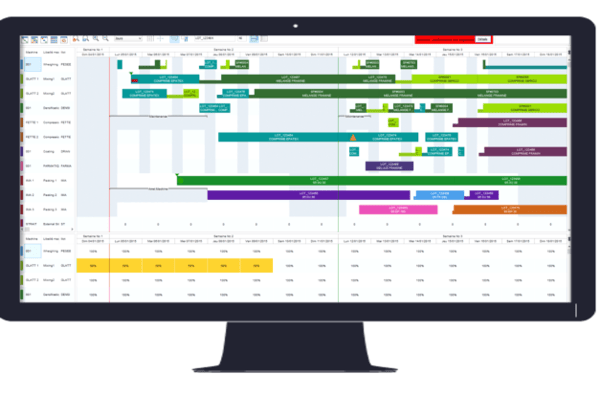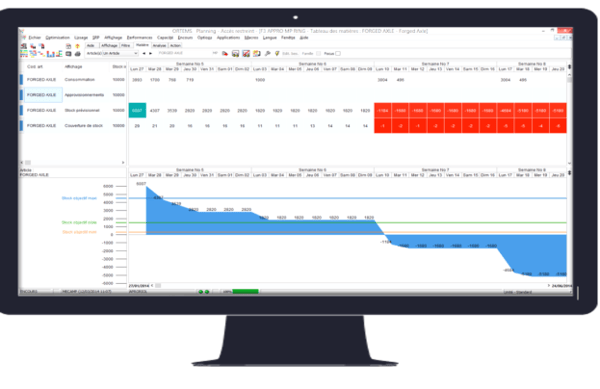Traps to Avoid When Converting to SAP S/4HANA
Article updated in July 2020
You probably already know that converting to SAP S/4HANA will not be another mere upgrade as in the past…
This latest version brings so many disruptive innovations that the conversion to SAP S/4HANA will probably be one of the most challenging and exciting projects for your SAP team in the last decade!
Many recurring issues that you have been experiencing with your system may now be solved with the new capabilities of SAP HANA (Also read: Migrating to SAP HANA Database). It is also going to be a unique opportunity to review your business requirements, look at them with fresh eyes and ensure your digital transformation.
However, there are a few traps to avoid if you want to guarantee your return on investment.
1. SAP got simple, don’t make it more complex!

Photo credit: SAP - what’s new in Cash Management and Payments with SAP S/4HANA
The first thing to do is to check the SAP simplification list, where you will be able to compare the new SAP S/4HANA with the classic ERP functionalities. It is also important to explore the potential impacts on your system.
Many transaction codes have become obsolete and have been replaced by user-friendly SAP Fiori applications. The data model itself has changed: redundant aggregate tables have disappeared, as well as most index tables. In the end, the simplification is drastic. For example, 28 tables have been summarized into only one in logistics! This change will make your business faster and more precise.
2. Convert ECC to S/4 where an S/4 implementation would have been faster and cheaper

Photo credit: SAP S/4HANA Basics
SAP provides full conversion automation tools. However, it may be worth starting from zero if:
- Your system is highly customized;
- You are not entirely satisfied;
- You would like to implement new structuring functionalities, for instance, accounting in groups currency.
Also, bear in mind, you cannot start an SAP S/4HANA implementation project if your ECC system version is lower than ECC 6.0 EHP7. In that case, you may have to upgrade your ECC system beforehand, so in the end you get one migration to SAP S/4HANA for the price of two.
A new SAP S/4HANA implementation based on an existing ECC system (even old versions) can be quite smooth: SAP provides multiple standard tools for migrating your master and transactional data.
Moreover, if you are thinking of reimplementing SAP all over again, why not move to the SAP Cloud version, which is based on the best state-of-the-art practices?
3. S/4 migration won’t take just one day…
Full conversion to SAP S/4HANA takes several days. If you cannot afford such a long downtime, then you should consider a full implementation to a new system.
The full process must be tested in real conditions several times
There are four main steps to be considered:
- Installation of SAP HANA (performed by your basis team)
During the “uptime” phase, the ECC system is accessible. SAP performs some checks, installs some components and updates technical objects. Then, during the “downtime” phase, the system cannot be accessed at all. The software and some tables are installed.
- Transport phase
This is when all SAP S/4HANA customizing is transferred into your production environment. Of course, the system is not yet available.
- Data migration
Once your system is installed, the migration cockpit should be run in order to transfer Finance data from the obsolete tables to the new ones. The conversion of financial documents to ACDOCA tables can be extremely time consuming! System access is also restricted to selected people (project team).
- Post migration
After the migration, some activities must be performed to ensure reconciliation between ECC and SAP S/4HANA. Again, it is not recommended to start using the system until everything is reconciled.
4. Neglect your third-party systems
It is critical to check that your non-SAP and SAP add-on applications are certified for SAP S/4HANA. If not, this could cause roadblocks during migration. It is indeed not a given! Many third-party applications are still not fully SAP S/4HANA compliant.
5. Consider that vendors and customers will be migrated automatically
SAP S/4HANA has an innovative approach for managing vendors and customers’ master data, which requires that all customers and vendors are created as Business Partners. This is a major change: a business partner is now a generic object which is assigned some “roles” that will open specific functions. For instance: being a vendor, a customer or even a bank... or even the three at the same time! In the end, master data management is simplified, but your process needs to be completely reviewed!
6. Keep your good old ABAP code
Custom code is analyzed during the standard conversion process. With a bit of work, you can be sure your programs will run properly. However, since many tables are now obsolete, it is worth taking advantage of the SAP HANA database and improving the performance of your custom programs.
7. Use the old transactions and ban SAP Fiori apps
This is probably the most common trap I have ever seen in my SAP S/4HANA migration project. Since you’ve been using transactions for several years (decades maybe?), you’re very much used to your good old transactions (VA01, MIRO, F-02 depending on your module). Believe me, your consultants are also used to them!
Although the old UI (SAP GUI) is not gone, you should check out what SAP Fiori can bring you in terms of user experience and process simplification. Converting users to innovative ways of working will take some time and. Change management will therefore probably be the critical part of your SAP project, much more than during your previous upgrades.
S/4 is undoubtedly one of the biggest innovation SAP has published since SAP R/3 in the nineties. Where some people will see a risk for their organization, others will see an opportunity to extend the potential of their information system. Early adopters have now demonstrated that S/4 migration and conversion projects can be successful and rewarding.
There is no trap you can’t see coming. Are you ready to kick off with us?
Sources:
S4/HANA System Conversion
Business Partner – Customer Vendor Integration S/4
Conversion vs New Implementation






